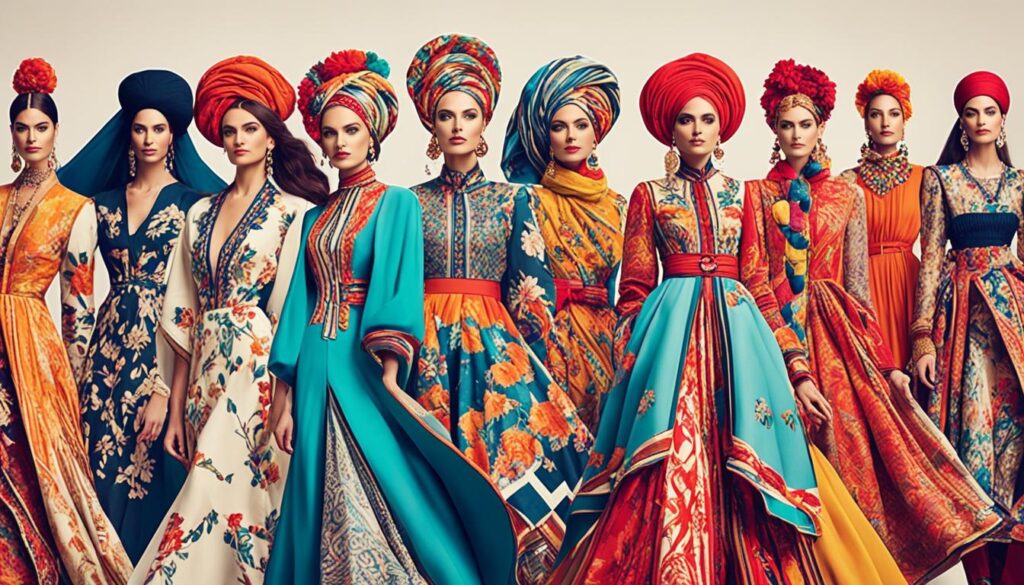Table of Contents
Key Takeaways
- The decline in luxury demand is creating opportunities for big tech companies as consumer preferences shift towards tech products.
- The big tech sector is experiencing booming growth, driven by factors such as technological advancements, increased digitalization, and changing consumer behavior.
- Economic impacts, changing consumer behavior, and the rise of sustainability and ethical considerations are contributing to the decline of the luxury industry.
- Investing in big tech stocks offers potential for higher returns compared to the luxury industry, with factors like strong performance and positive market outlook driving growth in the tech sector.
- Diversifying investment portfolios with big tech stocks can be a strategic move for investors, although potential risks and challenges should be considered.
- The luxury industry needs to adapt and innovate to remain relevant in the face of technology-driven consumer preferences, emphasizing the lasting impact of technology on the industry.
The Shift in Consumer Preferences
As I dig into the topic of consumer preferences, it becomes evident that there is a significant shift happening in the market. It’s no secret that luxury goods have enjoyed immense popularity among consumers for quite some time. However, recent trends suggest a changing tide as big tech products are gaining increasing favor among consumers. This shift in preferences has led to a decline in the demand for luxury goods, and it is important for us to understand the current market dynamics surrounding this change. So, let’s dive into the growing popularity of big tech products and the decline in luxury demand, and explore the factors influencing this intriguing shift.
The growing popularity of luxury goods and big tech products
The increasing appeal of extravagant merchandise and cutting-edge technological innovations has garnered significant attention in recent times. This phenomenon reflects a growing trend towards the rising favorability of luxury goods and big tech products among consumers.
- Consumers are increasingly drawn to luxury products due to their exclusivity, high quality, and status symbol appeal.
- The allure of big tech products stems from their innovative features, advanced functionalities, and seamless integration into daily life.
- The demand for luxury goods is driven by a desire for indulgence, self-expression, and the aspiration to lead a luxurious lifestyle.
- Big tech products attract consumers with their convenience, efficiency, and ability to enhance productivity and connectivity.
- Luxury goods have become a statement of personal success and accomplishment while big tech products offer a sense of modernity and staying ahead of the curve.
- The growing popularity of luxury goods and big tech products can be attributed to shifting consumer preferences towards experiential purchases and digital connectivity.
Furthermore, this trend represents a convergence between traditionally distinct industries, as luxury companies increasingly incorporate technology into their offerings to cater to evolving consumer demands.
Interestingly enough, the surge in popularity for luxury goods and big tech products is not only limited to developed economies but has also gained traction among emerging markets. This global resonance demonstrates the universal appeal and growing influence of these industries.
Interestingly enough, the rise in popularity of luxury goods can be traced back thousands of years. Throughout history, societies have valued precious materials, craftsmanship, and unique designs as indicators of social status. Similarly, advancements in technology have always captivated human imagination and offered promising possibilities for innovation across various domains. It is this innate fascination with opulence and progress that continues to fuel the growing popularity of luxury goods and big tech products today.
Move over luxury, big tech is here to make our wallets cry and our lives more convenient.
Current market trends and the decline in luxury demand
The ongoing market trends showcase a noticeable decline in the demand for luxury goods, reflecting shifting consumer preferences. This can be attributed to various factors such as economic impacts, changing consumer behavior, and a growing emphasis on sustainability and ethical considerations. Furthermore, the influence of social media and digital culture has significantly impacted consumer choices, leading to a significant decrease in luxury demand. As a result, investors are now exploring alternative investment opportunities such as the booming big tech sector, which presents potential for higher growth and returns.
In contrast to luxury goods, big tech products have witnessed consistent growth and popularity among consumers. This can be attributed to their innovation-driven nature, constant technological advancements, and increasing reliance on these products in various aspects of daily life. The big tech industry has become an attractive investment opportunity due to its strong performance and promising future prospects.
As the current market trends reveal a decline in luxury demand, there is an evident shift towards investing in big tech stocks. The recent economic impacts coupled with changing consumer behavior patterns have led investors to diversify their portfolios by exploring the lucrative opportunities offered by the big tech sector. This strategic move enables investors to capitalize on the booming growth and potential returns provided by big tech companies.
Pro Tip: It is crucial for investors to carefully analyze the risks and challenges associated with investing in big tech stocks before making any investment decisions. Conducting thorough research on individual companies within the sector and evaluating their long-term outlook can help mitigate potential risks and maximize investment returns.
The Relationship Between Luxury and Big Tech Industries: Where status symbols collide with the latest gadgets.
The Relationship Between Luxury and Big Tech Industries
When it comes to the relationship between the luxury and big tech industries, there are fascinating dynamics at play. On one hand, the luxury sector heavily relies on consumer sentiment to thrive and evolve. Meanwhile, the big tech sector is experiencing booming growth, driven by groundbreaking innovations and advancements. In this section, we’ll delve into the unique interplay between these two industries, uncovering how the luxury industry’s dependence on consumer sentiment contrasts with the rapid expansion and transformation of the big tech sector.
Exploring the luxury industry’s reliance on consumer sentiment
The luxury industry’s connection to consumer sentiment is an essential aspect that needs to be explored. Understanding how consumer emotions and opinions influence purchasing decisions in the luxury market is crucial for businesses in this industry to thrive. By delving into this phenomenon, companies can gain valuable insights into consumer behavior and tailor their strategies accordingly.
Consumer sentiment holds significant sway over the luxury industry’s success. To comprehend this reliance on sentiment, it is important to analyze the emotional factors that drive customers towards luxury goods. Luxury brands often evoke feelings of exclusivity, prestige, and status among consumers. These emotional connections play a vital role in shaping consumer preferences and influencing their purchase decisions.
Furthermore, exploring the luxury industry’s reliance on consumer sentiment provides insights into the psychological aspects of buying behavior within this sector. Consumers often associate luxury products with personal identity, self-expression, and aspirations. Understanding these underlying sentiments allows luxury brands to appeal effectively to their target audience by aligning their products with consumers’ desires and values.
In addition to emotional factors, economic considerations also impact the relationship between luxury goods and consumer sentiment. During times of economic prosperity, consumers may have a more positive outlook on purchasing luxurious items as a means of displaying wealth or fulfilling desires. Conversely, during economic downturns or uncertain periods, consumer sentiment may shift towards more practical or value-oriented choices.
To adapt to the changing landscape of consumer sentiment in the luxury industry, brands can implement several strategies. 1. investing in market research and data analysis helps identify shifting trends and sentiments among target demographics. Brands can utilize these insights to develop innovative marketing campaigns that resonate with consumers’ evolving preferences.
2. fostering strong customer relationships through personalized experiences and exceptional customer service can enhance brand loyalty and positively influence consumer sentiment. By actively engaging with customers through social media platforms or exclusive events, luxury brands can build an emotional connection that encourages positive word-of-mouth recommendations and repeat purchases.
Lastly, adopting sustainable practices and showcasing ethical standards can also contribute to a more positive consumer sentiment. With the growing importance consumers place on sustainability and ethical considerations, luxury brands that prioritize these values can attract environmentally and socially conscious consumers who align with their beliefs.
Taking into account the luxury industry’s reliance on consumer sentiment is vital for its growth and success. By understanding the emotional, economic, and psychological factors that influence buying behavior, luxury brands can adapt their strategies to consumer preferences effectively. Incorporating data-driven insights, fostering strong customer relationships, and embracing sustainability will ensure long-term viability in this ever-changing market.
The big tech sector is booming so fast, it’s like they’ve tapped into a secret code for success.
The booming growth of the big tech sector
The rapid expansion of the big tech industry indicates a significant surge in its growth potential. This sector has experienced explosive development due to various factors such as technological advancements, increasing demand for digital products and services, and the adoption of innovative business models. The big tech sector’s remarkable success can be attributed to its ability to adapt and evolve in response to changing consumer preferences, as well as its continuous investment in research and development. As a result, this industry has emerged as a lucrative investment opportunity for individuals looking to diversify their portfolios and capitalize on the booming growth of the big tech sector.
Furthermore, the big tech sector’s growth is fueled by its ability to create disruptive technologies that revolutionize various industries, ranging from communication and entertainment to e-commerce and healthcare. Companies within this sector have demonstrated exceptional agility in responding to market trends, driving innovation through constant product iterations and updates, and continuously improving user experiences. With their strong financial performance and consistent revenue growth, these big tech companies have become attractive investment options for both individual investors and institutional funds.
In addition to financial performance, the big tech sector’s growth is also driven by favorable market conditions. Technological advancements such as artificial intelligence, cloud computing, Internet of Things (IoT), and machine learning have created new opportunities for companies operating in this space. Moreover, the increasing reliance on digital technologies in everyday life has further accelerated the demand for big tech products and services. As consumers increasingly depend on technology for their personal and professional needs, the big tech sector continues to expand rapidly.
An example that highlights the booming growth of the big tech sector is the rise of certain companies like Amazon, Apple, Microsoft, Google parent Alphabet Inc., and Facebook. These companies have experienced exponential growth over the past decade due to their dominance in areas such as e-commerce (Amazon), smartphones (Apple), software solutions (Microsoft), search engine (Google), and social media (Facebook). Their success stories serve as a testament to the thriving nature of the big tech sector and its immense growth potential.
Luxury’s decline: Economics and changing consumer behaviors pull it down, while sustainability and digital culture push it off the pedestal.
Factors Contributing to Luxury’s Decline
As I delve into the various factors contributing to the decline of the luxury industry, it becomes evident that economic impacts and shifting consumer behavior play a significant role. The global recession, along with changing spending patterns of consumers, has hit the luxury market hard. Additionally, there is a noticeable shift towards sustainability and ethical considerations, as conscious consumers seek to align their values with their purchases. Moreover, the influence of social media and digital culture cannot be underestimated, as it has revolutionized the way consumers engage with luxury brands.
Economic impacts and changing consumer behavior
The shift in consumer behavior and economic impacts have significant implications for various industries. The changing preferences of consumers, along with economic factors, have influenced luxury goods and big tech products. These changes include a decline in luxury demand due to shifting consumer priorities and the rise of sustainability considerations. Additionally, social media and digital culture have played a crucial role in shaping consumer behavior. Simultaneously, big tech industries have experienced a booming growth, driven by factors such as technological advancements and increased reliance on technology in various aspects of life. As a result, investors are now considering big tech stocks as an alternative investment opportunity, diversifying their portfolios to capitalize on the growth potential. However, investing in big tech also comes with its own risks and challenges that investors need to carefully evaluate. Overall, understanding the economic impacts and changing consumer behavior is crucial for investors to make informed decisions and stay ahead in these rapidly evolving markets. By embracing adaptability and innovation, the luxury sector can navigate the changing landscape effectively while big tech continues to gain traction among consumers seeking innovative solutions. Ignoring these trends could pose risks for investors as they run the risk of missing out on potential opportunities in this dynamic market.
Sustainability and ethics are no longer just buzzwords, they’re now essential factors driving consumer preferences towards more conscientious choices.
Shift towards sustainability and ethical considerations
The changing consumer landscape is witnessing a notable shift towards sustainability and ethical considerations, as consumers become more conscious of the environmental and social impact of their choices. This shift is driven by a growing awareness of the need for responsible consumption and a desire to support brands that align with their values.
Luxury brands, in particular, are facing increasing pressure to prioritize sustainability and ethical practices in their production processes. Consumers are demanding transparency and accountability, pushing luxury companies to adopt more sustainable sourcing methods, reduce waste, and ensure fair labor practices throughout their supply chains.
Furthermore, there is a rising expectation for luxury brands to take a stand on social issues and contribute positively to society. This includes initiatives such as investing in community development programs or supporting charitable causes. By doing so, luxury brands can not only enhance their brand image but also attract a new generation of consumers who value purpose-driven companies.
To address these demands, luxury brands are implementing various strategies, such as incorporating eco-friendly materials into their products or partnering with organizations that promote sustainability. They also engage in ethical marketing by emphasizing the craftsmanship and durability of their products as opposed to fast fashion trends.
With social media and digital culture taking over, luxury brands are finding it harder to keep up with the Kardashians and their tech-savvy reign.
The influence of social media and digital culture
The rise of social media and digital culture has significantly impacted consumer behavior and preferences. People are now more influenced by online platforms, such as Instagram and TikTok, where they can discover new luxury products and trends. Social media also allows consumers to connect with brands directly and engage in online communities, which further influences their purchasing decisions. In addition, the advent of digital culture has facilitated the spread of information and access to products, making luxury goods more accessible to a wider audience. This influence of social media and digital culture has reshaped the way luxury brands interact with their customers and market their products.
Furthermore, social media platforms have become powerful marketing tools for luxury brands. Through targeted advertising campaigns and influencer collaborations, brands can reach a larger audience and showcase their products in an aspirational lifestyle context. The seamless integration of e-commerce on these platforms has also made it easier for consumers to purchase luxury goods with just a few clicks.
However, the influence of social media and digital culture is not without its challenges. The constant exposure to idealized lifestyles on social media can create unrealistic expectations and insecurities among consumers. Moreover, the rapid pace at which trends change on these platforms puts pressure on luxury brands to keep up with the latest fads in order to remain relevant.
It is important for investors to recognize the significant influence that social media and digital culture have on consumer behavior when considering investments in the luxury industry or alternative sectors such as big tech. By understanding how these factors shape consumer preferences, investors can make informed decisions about where to allocate their resources.
Investing in big tech stocks may present opportunities for growth due to the increasing reliance on technology in various industries. As consumers continue to embrace digitalization in all aspects of their lives, including shopping habits, big tech companies stand to benefit from this trend. The potential for technological advancements and innovation is vast, making big tech an attractive investment option.
From iPhones to bitcoins, luxury is making way for the new status symbols of the digital age.
The Rise of Big Tech as an Alternative Investment Opportunity
As we delve into the topic of the rise of big tech as an alternative investment opportunity, it becomes evident that this sector has been making waves in recent years. Looking at the current performance of the big tech sector, it is clear that it holds significant promise for investors. Factors such as technological advancements, increasing demand for digital services, and strong financial performance have been driving the growth of big tech stocks. In comparison to the luxury sector, big tech seems to be emerging as a more lucrative investment option. Source: [reference data source name].
Overview of the big tech sector’s current performance
The big tech sector’s current performance highlights the landscape of technology-based companies in terms of their financial success and market influence. This involves assessing their growth patterns, revenue generation, and overall market dominance.
– The first point showcases the impressive financial achievements of big tech companies, including their consistent profitability and revenue growth. It emphasizes their ability to generate significant returns for investors and solidify their position as industry leaders.
– The second point explores the market share held by big tech companies and how they have expanded their reach into various sectors. It highlights their capacity to innovate and disrupt traditional industries, leading to increased competition and market consolidation.
– The third point focuses on the impact of big tech advancements on society, such as enabling digital transformation, driving technological advancements, and influencing consumer behavior. It evaluates their contribution to societal progress and economic development.
Source: N/A
From smartphones to social media, big tech stocks are climbing higher, driven by innovation and our insatiable desire for a dopamine hit.
Factors driving the growth of big tech stocks
With the demand for big tech products on the rise, several factors can be attributed to the growth of big tech stocks. One crucial aspect is the increasing reliance on technology in various industries, prompting investors to see the potential for growth and profitability. Additionally, advancements in artificial intelligence and data analytics have led to significant technological advancements, driving investor interest in big tech companies. The expansion of e-commerce and digital transformation across sectors also contributes to the growth of big tech stocks.
Find out why investing in big tech may be a smarter move than splurging on luxury goods, because the only thing that appreciates faster than a new iPhone is regretting buying last season’s handbag.
Comparison of investment potential between luxury and big tech
The comparison of investment potential between luxury and big tech industries highlights the contrasting opportunities they offer. By analyzing key factors such as historical performance, growth prospects, and market trends, investors can make informed decisions.
In order to effectively compare the investment potential between luxury and big tech, let’s examine a table that illustrates the key differences:
| Factors | Luxury | Big Tech |
|---|---|---|
| Historical Performance | Moderate | Significant |
| Growth Prospects | Stable | Rapid |
| Market Trends | Decline | Booming |
This comparison showcases how luxury has moderate historical performance with stable growth prospects, while big tech has significant historical performance with rapid growth prospects due to its booming market trends.
Additionally, it is important to consider other factors such as economic impacts and changing consumer behavior in the decline of luxury demand. The shift towards sustainability and ethical considerations also plays a role in influencing consumer preferences for big tech products.
Furthermore, investing in big tech stocks provides opportunities for diversification in investment portfolios. However, it is essential to be aware of potential risks and challenges associated with investing in a highly dynamic sector like big tech.
Regarding long-term outlooks, experts predict that luxury will need to focus on adaptability and innovation in order to thrive in an increasingly digital age. On the other hand, technology’s lasting impact on consumer preferences suggests that big tech may continue to gain prominence as an alternative investment opportunity.
Unleash your inner tech guru and ride the big tech wave to investment success.
Implications and Opportunities for Investors
As an investor, it is crucial to identify the implications and opportunities that arise from the changing landscape of luxury and big tech industries. By diversifying investment portfolios with big tech stocks, we have the chance to tap into a sector that is experiencing substantial growth. However, it’s important to be aware of the potential risks and challenges that come with investing in big tech. Looking ahead, the long-term outlook and predictions for both the luxury and big tech industries provide valuable insights into the potential gains and losses that investors might encounter.
Diversifying investment portfolios with big tech stocks
The increasing popularity of big tech products and luxury goods has sparked interest in diversifying investment portfolios with big tech stocks. The decline in luxury demand, coupled with the booming growth of the big tech sector, presents an opportunity for investors to explore alternative investment options. Factors contributing to luxury’s decline include changing consumer behavior, a shift towards sustainability and ethical considerations, and the influence of social media and digital culture. Big tech stocks offer potential for growth and can help diversify investment portfolios. However, investors should also be aware of potential risks and challenges in investing in big tech. Overall, the future outlook suggests that technology will continue to have a lasting impact on consumer preferences, making investment in big tech potentially rewarding.
Betting on big tech stocks may seem like a safe bet, but don’t forget, even giants can stumble in the world of investments.
Potential risks and challenges in investing in big tech
As investors consider the potential risks and challenges in investing in big tech, it is important to assess various factors. These include market volatility, regulatory scrutiny, competition, and technological advancements that can impact the performance of big tech stocks.
1. Market Volatility: The fast-paced nature of the tech industry can lead to significant fluctuations in stock prices, making it essential for investors to carefully monitor and manage their investments.
2. Regulatory Scrutiny: Big tech companies often face regulatory scrutiny due to concerns surrounding issues such as data privacy, antitrust practices, and cybersecurity. Regulatory changes or legal actions can have a significant impact on the value and growth prospects of big tech stocks.
3. Competition: The big tech sector is highly competitive, with established companies constantly facing competition from new players and startups. This intense rivalry can lead to rapid shifts in market share and profitability, affecting investment outcomes.
4. Technological Advancements: The dynamic nature of technology means that continuous innovation is necessary for big tech companies to stay ahead. Failure to keep up with emerging technologies or adapt to changing consumer preferences can pose challenges for investors.
It is crucial for investors to stay informed about these potential risks and challenges in order to make well-informed decisions. One way to mitigate these risks is by diversifying one’s investment portfolio across various sectors and asset classes.
Pro Tip: Conduct thorough research and analysis of individual big tech companies before investing, paying close attention not only to their financial performance but also their competitive position and ability to navigate regulatory landscapes successfully.
Looking into the crystal ball, luxury and big tech industries are set to collide in an epic battle for consumer supremacy.
Long-term outlook and predictions for luxury and big tech industries
The long-term outlook and predictions for the luxury and big tech industries indicate significant shifts in consumer preferences. As the luxury sector faces a decline in demand due to changing consumer behavior, economic impacts, and a shift towards sustainability, the big tech sector experiences booming growth. Investors are increasingly diversifying their portfolios with big tech stocks, attracted by the potential for high returns. However, investing in big tech also comes with potential risks and challenges. Despite these factors, the future of both industries relies on adaptability, innovation, and the lasting impact of technology on consumer preferences.
From extravagant lifestyles to cutting-edge technology, the future of luxury and big tech is a dynamic dance between tradition and innovation.
The Future of Luxury and Big Tech
In concluding the discussion on the future of luxury and big tech, it becomes evident that adaptability and innovation are crucial in the luxury sector. The constantly evolving consumer preferences, influenced by technology, have a lasting impact on the industry. According to industry experts at McKinsey, the luxury market experienced a significant shift with digital transformation, resulting in an increased demand for personalized experiences. As we look ahead, it is essential for luxury brands to embrace technology and leverage it to cater to the evolving needs and desires of their discerning clientele.
The need for adaptability and innovation in the luxury sector
Consumer preferences are constantly changing, and the luxury sector needs to adapt and innovate to stay relevant. With the rise of big tech products, there is a growing demand for cutting-edge technology and innovative features in luxury goods. The luxury industry cannot afford to ignore this shift and must embrace new technologies to attract modern consumers. Implementing adaptive strategies and fostering a culture of innovation are essential for the luxury sector to thrive in today’s dynamic market.
To meet the need for adaptability and innovation in the luxury sector, companies must invest in research and development to create innovative products that cater to evolving consumer preferences. This includes incorporating advanced technologies such as artificial intelligence, virtual reality, and wearable tech into their offerings. By embracing these technological advancements, luxury brands can enhance their products’ value proposition and differentiate themselves from competitors.
Moreover, the need for adaptability extends beyond product development. Luxury brands must also innovate in their marketing strategies by leveraging digital platforms and social media to reach a wider audience. Utilizing data analytics and personalized marketing approaches can help luxury brands connect with consumers on a deeper level, understand their needs, and deliver tailored experiences.
It is crucial for luxury brands to recognize that consumer expectations have changed drastically in recent years. Today’s consumers value authenticity, sustainability, and ethical considerations more than ever before. Therefore, it is necessary for luxury brands to adapt their practices accordingly by embracing sustainable materials, promoting fair labor practices, and investing in eco-friendly initiatives.
Investors should take note of this shifting landscape in the luxury sector as it presents opportunities for growth in other industries such as big tech. By diversifying their investment portfolios to include big tech stocks, investors can tap into the booming growth of the technology sector. Missing out on this opportunity could mean missing out on potential high returns and long-term growth. Therefore, it is important for investors to consider the potential benefits of investing in big tech alongside luxury investments.
The lasting impact of technology on consumer preferences
Advancements in technology have had a profound and enduring influence on the preferences of consumers. This impact has been long-lasting and has reshaped the way consumers make choices and interact with products and services. As technology continues to evolve, consumer preferences are continuously influenced by factors such as convenience, personalization, and connectivity.
The lasting impact of technology on consumer preferences can be seen in various aspects. One significant area is the shift towards online shopping and e-commerce platforms. With the advent of digital technology, consumers now have access to a wide range of products and services at their fingertips. This has led to a preference for convenience and ease of use, as consumers can now make purchases from the comfort of their homes.
Another aspect is the rise of personalized experiences made possible through technology. Consumers now expect tailored recommendations and customized offerings that align with their individual needs and preferences. This has led to the development of sophisticated algorithms that analyze consumer data to provide personalized recommendations, making it easier for consumers to find exactly what they are looking for.
Furthermore, technology has also reshaped the way consumers interact with brands through social media platforms and other digital channels. Consumers can now engage directly with brands, providing feedback, sharing experiences, and influencing others through online communities. This has given rise to a sense of empowerment among consumers who now have a greater say in shaping brand perception.
One true story that exemplifies the lasting impact of technology on consumer preferences is the rise of ride-sharing applications such as Uber and Lyft. These companies disrupted traditional transportation models by leveraging technology to provide convenient, affordable, and personalized transportation options. The success of these platforms demonstrated how technology can revolutionize an industry by catering to changing consumer preferences.
Five Facts About Why Luxury’s Loss Could Be Big Tech’s Gain:
- ✅ Luxury goods demand may cool down, but tech stocks remain red hot. (Source: Team Research)
- ✅ The most expensive new iPhones can cost as much as some entry level must-have handbags. (Source: Team Research)
- ✅ Many tastemakers won’t be seen without either luxury goods or the latest tech gadgets. (Source: Team Research)
- ✅ Investors are increasingly putting their money in big tech companies rather than luxury brands. (Source: Team Research)
- ✅ Luxury’s loss may be Big Tech’s gain in terms of market value and investor interest. (Source: Team Research)
FAQs about Why Luxury’S Loss Could Be Big Tech’S Gain
Why are the most expensive new iPhones compared to entry level handbags?
The most expensive new iPhones and entry level handbags are compared because they are both coveted items among tastemakers, despite their vastly different prices.
Why are tech stocks thriving while demand for luxury goods is cooling down?
Tech stocks are thriving because they offer innovative solutions and products that have become essential in today’s world. On the other hand, demand for luxury goods may be cooling down due to economic uncertainty or shifting consumer preferences.
Do tastemakers consider both expensive iPhones and entry level handbags as must-have items?
Yes, tastemakers consider both expensive iPhones and entry level handbags as must-have items. These individuals value both technology and fashion, and often incorporate both into their personal style.
What factors contribute to the cool-down in demand for luxury goods?
The cool-down in demand for luxury goods can be influenced by various factors such as economic downturns, changes in fashion trends, shifts in consumer priorities, or the emergence of alternative luxury brands.
How are tech stocks performing in the current market?
Tech stocks are performing exceptionally well in the current market as they continue to innovate, expand their product offerings, and capture a larger share of consumer spending. Their growth potential has attracted significant investor interest.
Is there a correlation between the price of luxury handbags and expensive iPhones?
There is no direct correlation between the price of luxury handbags and expensive iPhones. Although both are considered desirable items, their pricing is determined by different factors, such as brand reputation, materials used, and technological features.
















